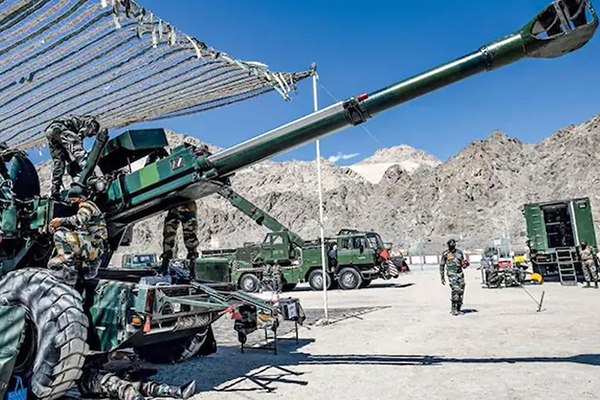
India, 28 August, published a new list of 780 components and sub-systems that will come under a phased import ban between December 2023 and December 2028, with the latest indigenisation push covering items used in fighter planes, trainer aircraft, helicopters, submarines and tanks.
Defence minister Rajnath Singh approved the latest list to cut down imports by defence public sector undertakings and achieve Aatmanirbharta (self-reliance) in the defence manufacturing sector, the ministry said in a statement.
This is the third list of “important line replacement units (LRUs)/sub-systems/ components” placed under an import ban. It comes on the back of two similar lists published by the government in December 2021 and March 2022.
“These lists contain 2,500 items which are already indigenised and 458 items which will be indigenised within the given timelines. Out of 458, 167 items have been indigenised so far,” the defence ministry said.
The indigenous development of these sub-systems and components will bolster the economy, reduce the import dependence of DPSUs, help harness design capabilities of the domestic defence industry and position India as a leader in these technologies, it added.
The components and sub-systems sought to be produced locally include several items for Sukhoi-30 and Jaguar fighters, light combat aircraft and Dornier-228 planes; multiple systems for submarines, and equipment for T-90 and Arjun tanks.
To be sure, India has published three other lists imposing a phased import ban on 310 different types of weapons and platforms, including lightweight tanks, naval utility helicopters, artillery guns, missiles, destroyers, ship-borne cruise missiles, light combat aircraft, light transport aircraft, long-range land-attack cruise missiles, basic trainer aircraft and multi-barrel rocket launchers.
The latest list has been put out by the defence ministry at a time when the global backlash against Russia over its Ukraine invasion has raised questions about the fate of new projects with that country, procurement of spares for existing Russian-origin weapons, and maintenance and servicing of legacy equipment operated by the three services.
The earlier list, published in March, included sub-systems that India imports from Russia for weapons and platforms, including T-90 and T-72 tanks, BMP-II infantry combat vehicles, warships and submarines, and anti-tank missiles.
Russian-origin equipment forms the bedrock of India’s military capabilities and includes fighter jets, transport planes, helicopters, warships, submarines, tanks, infantry combat vehicles, multi-rocket systems, rifles, and even shoulder-fired missiles.
The government has taken several steps in recent years to boost self-reliance, including raising foreign direct investment (FDI) in defence manufacturing, creating a separate budget for buying locally made military hardware and notifying lists of weapons, equipment and sub-systems that cannot be imported.
India is making planned, steady and focused progress to achieve Aatmanirbharta in the defence sector and several projects have been sanctioned for the local industry, former director general of military operations Lieutenant General Vinod Bhatia (retd) earlier said.

















